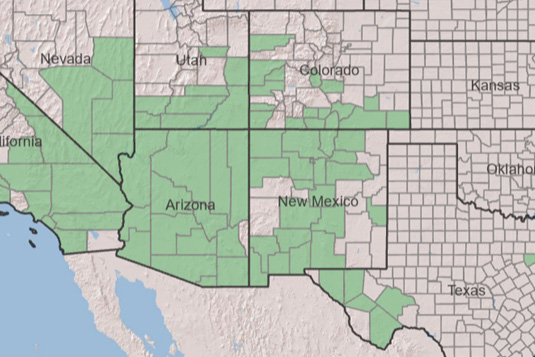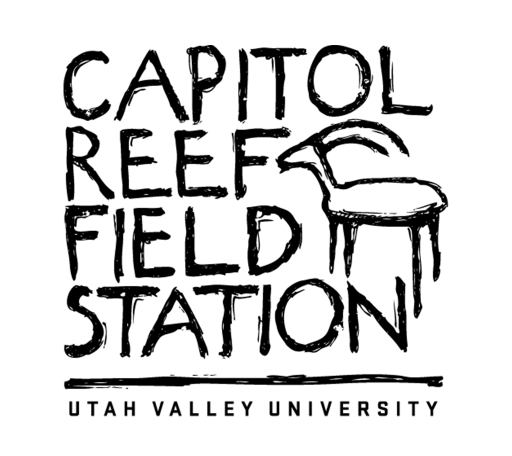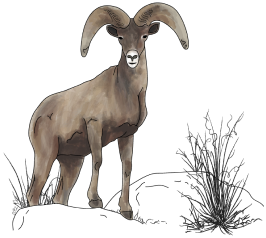Mirabilis multiflora (Torr.) A. Gray
Eukaryota > Viridiplantae > Streptophyta > Streptophytina > Embryophyta > Tracheophyta > Euphyllophyta > Spermatophyta > Magnoliopsida > Mesangiospermae > eudicotyledons > Gunneridae > Pentapetalae > Caryophyllales > Nyctaginaceae > Mirabilis > Mirabilis mutiflora [1]
![Habit of Mirabilis multiflora including the entire plant. Photo by Stan Sheb. [10]](/crfs/images/native-plants/plant-directory/coloradofouroclock-first.jpg)
Habit of Mirabilis multiflora including the entire plant. Photo by Stan Sheb. [10]
Herb, long-lived perennial, clump-forming, decumbent to ascending mainly. Stems 3-8 dm tall, 4-10 mm thick, tapering upwards. Herbage green or glaucus, puberulent to glabrous. Leaves short-petiolate, blades 2-10 cm long and about as broad, orbicular to ovate, base truncate to subcordate, apex rounded to obtuse or acute. Involucres campanulate, 5-lobed, connate to above the middle, 20-35 mm long, erect or ascending, peduncles 0.5-7 cm long. Flowers 6 per involucre, pedicels 2 mm long, on midvein of the subtending bract; perianth 4-6 cm long, funnelform, pink-purple (magenta), the tube colored like the limb or green; stamens exerted, 5-10 or more, the filaments glabrous to pubescent [2].
![Involucre and fruit of Mirabilis multiflora. Photo by Jim Boone at birdandhike.com [11]](/crfs/images/native-plants/plant-directory/coloradofouroclock-sec.jpg)
Involucre and fruit of Mirabilis multiflora. Photo by Jim Boone at birdandhike.com [11]
Mirabilis multiflora can be differentiated from all other native, non-cultivated Mirabilis species in Utah by its longer (4-6 cm) perianth (calyx + flowers) whereas other species are less than 4 cm long. Mirabilis jalapa is a cultivated variety that has varicolored flowers ranging from yellow to red with some flowers themselves exhibiting two colors on one flower; M. multiflora is not variegated in flower color but uniformly magenta [2].
Mirabilis is Latin for miraculous or wonderful, alluding to the beauty of the plants. The word multiflora means many-flowered (Hazelton, 2017). Mirabilis multiflora was first described as Oxybaphus mutiflorus Torr. in a report commissioned by the Department of the Interior to describe and catalogue plants along the U.S. / Mexico boundary [3].
![Flowers of Mirabilis multiflora. Photo by Stan Sheb. [9]](/crfs/images/native-plants/plant-directory/coloradofouroclock-third.jpg)
Flowers of Mirabilis multiflora. Photo by Stan Sheb. [9]
Mirabilis multiflora was documented for food and medicinal use by Hopi, Zuni, and Navajo North American tribes and can be used medicinally as a gynecological aid, to treat rheumatism, swellings, various mouth disorders, and as an antiseptic to wash out wounds [4,5]. The root was chewed by a medicine man to induce visions [6]. It can also be used as a tea, as tobacco, and as a bird trap string [4,5].

Distribution map of Mirabilis multiflora on a county level. [7].
Mirabilis multiflora was last assessed for NatureServe 13 May 1991 and is considered secure [8]. It has not been assessed for the IUCN Red List.
M. multiflora is found in Creosote bush, blackbrush, and pinyon-juniper communities [2]. It can be found in gravelly and sandy soils, from the creosote flats of the low desert to the chaparral, and into the ponderosa forests from 500-8,500 ft (152-2591 m). The flowers occur in spring and summer.
[1] "Taxonomy Browser (Mirabilis multiflora)." National Center for Biotechnology Information, www.ncbi.nlm.nih.gov/Taxonomy/Browser/wwwtax.cgi?mode=Info&id=117589
[2] Welsh, S. L. 2003. A Utah flora. 3rd ed., Brigham Young University Press. ISBN 0-8425-2556-4
[3] United States Dept of the Interior. 1859. “Report on the United States and Mexican boundary survey :made under the direction of the secretary of the Interior.” C. Wendell, Printer. Washington. pg. 173
[4] Colton, Harold S. 1974. Hopi History And Ethnobotany, in D. A. Horr (ed.) Hopi Indians. Garland: New York., page 334.
[5] Vestal, Paul A. 1952. The Ethnobotany of the Ramah Navaho. Papers of the Peabody Museum of American Archaeology and Ethnology 40(4):1-94
[6] Whiting, Alfred F. 1939. Ethnobotany of the Hopi. Museum of Northern Arizona Bulletin 15: 31, 75.
[7] USDA NRCS National Plant Data Team. "Mirabilis multiflora." USDA Plants Database, plants.usda.gov/home/plantProfile?symbol=MIMU
[8] "Mirabilis multiflora Colorado four o’clock." NatureServe Explorer 2.0, https://explorer.natureserve.org/Taxon/ELEMENT_GLOBAL.2.146212/Mirabilis_multiflora
[9] Photo by Stan Shebs. https://commons.wikimedia.org/wiki/File:Mirabilis_multiflora_2.jpg
[10] Photo by Stan Shebs. https://commons.wikimedia.org/wiki/File:Mirabilis_multiflora_5.jpg
[11] Photo by Jim Boone from birdandhike.com. https://www.birdandhike.com/Veg/Species/Forbs-P/Mirabi_mul/_Mir_mul.htm



